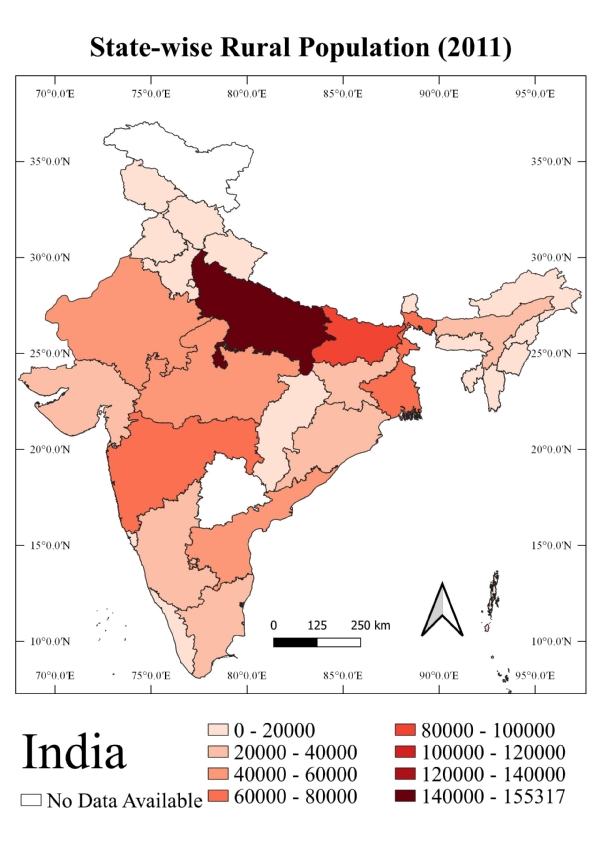Industrial and Demographic Disparities in India
06 Nov 2022 13:00:00
Since last few months, the headlines of regional newspapers in Maharashtra are about two major industrial projects moving to Gujrat. One was Vedanta-Foxconn semiconductor manufacturing and the other one was Tata-Airbus defense aircraft manufacturing project. Both these projects could have created massive employment opportunities in the state, which have shifted to Gujarat.
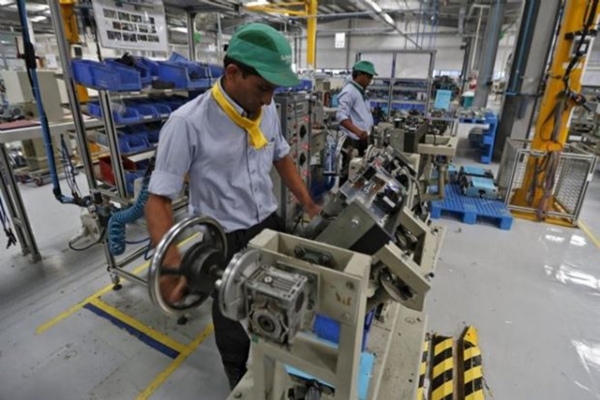
The purpose of the article is not to discuss which government’s fault it was. In India, there is a vast difference in industrial development in its southern and northern states. Previously we have seen that among primary sectors, India is a leading milk producer, and Uttar Pradesh and Gujarat were leading states. In the case of the steel industry, as the steel plant location is closely associated with the availability of raw materials, the maximum number of steel plants was in eastern India. Similarly, there is a disparity in how industries have been spread across the country.
Industrial development requires various other factors to get developed, eg. skilled labor, power, transportation, financial infrastructure, etc. In India, as per the Reserve Bank of India’s data (RBI), there is a total of 242,395 factories.
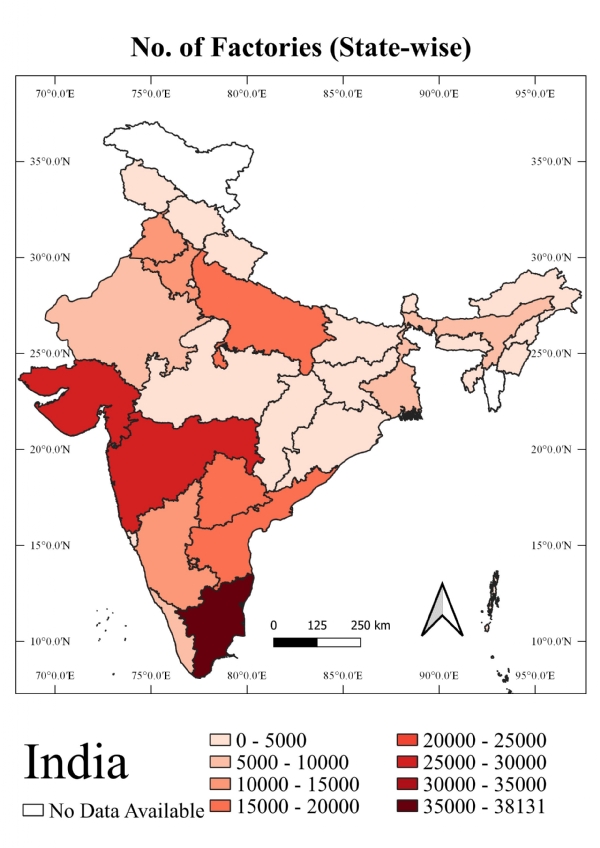

The same data when posted on the map, we can see that some southern and western states like Tamil Nadu, Maharashtra, and Gujarat are far ahead of some other central and eastern states like Bihar and Madhya Pradesh. In terms of numbers, Tamil Nadu has the highest number of factories in the country, on the other hand, Andaman and Nicobar Islands have just 14 factories and mainland Sikkim has only 84 factories for obvious reasons.
Also Read: India's gigantic steps towards ODF country
Demography and Industrialization
We have seen that southern states have more industries than central and eastern states. The map of industrialization is inverse to some extent to that of the state-wise birth rate. This means states with high birth rates have comparatively low industrialization and states with high industrialization have comparatively low birth rates. See the following map.
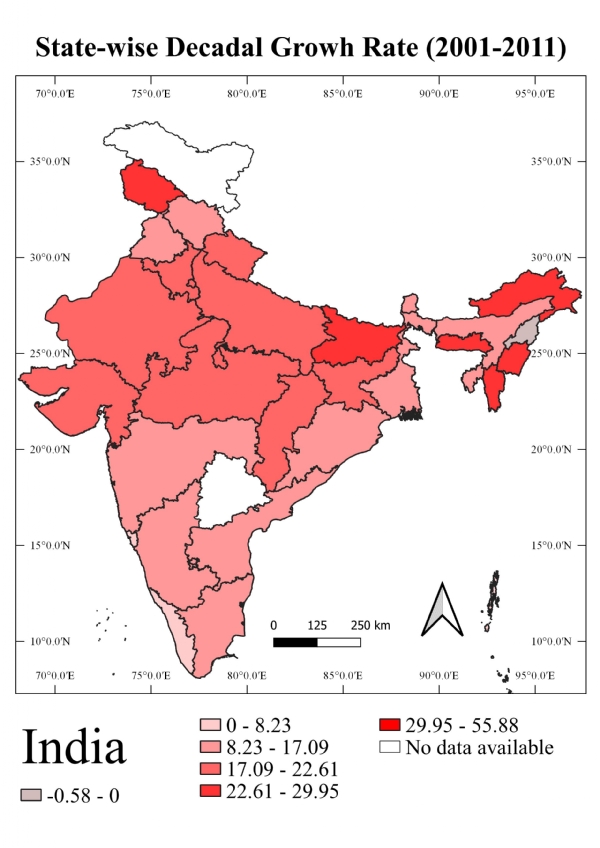
As the data is from 2001-2011 the states of Telangana and Ladakh were not created at that time, hence their separate data is not available. Map also highlights that poorly industrialized states like Bihar, Jharkhand, and Chhattisgarh have high growth rates. Let’s have a look at the urban-rural distribution of the population.
As the data is from 2011, separate data for Telangana and Ladakh is unavailable, and all figures are in thousand. If we compare, states which are either moderately or less industrialized i.e. have less number of factories have more of a rural population.
One can see the correlation between all three data. Less industrialized areas of India, majorly have a rural population. No doubt, this is the ultimate fact, because states like Maharashtra are performing well on a number of factories scale, yet have a considerable amount of rural population. Yet, this pattern can be noted in central and eastern states. Being more rural states, the decadal growth rate of the population is high in such states. This is an alarming situation. These states can face employment issues and other associated problems, at the same time, outward migration from these areas is also experienced.
Also Read: How India makes steel for the world
Income Disparity
Many industries have the capacity to provide a large amount of employment. Employment paves the way for further development. People can spend, when they earn. Therefore, industrial disparities bring income disparities. The following map shows Per Capita Net State Domestic Product for the year 2018.
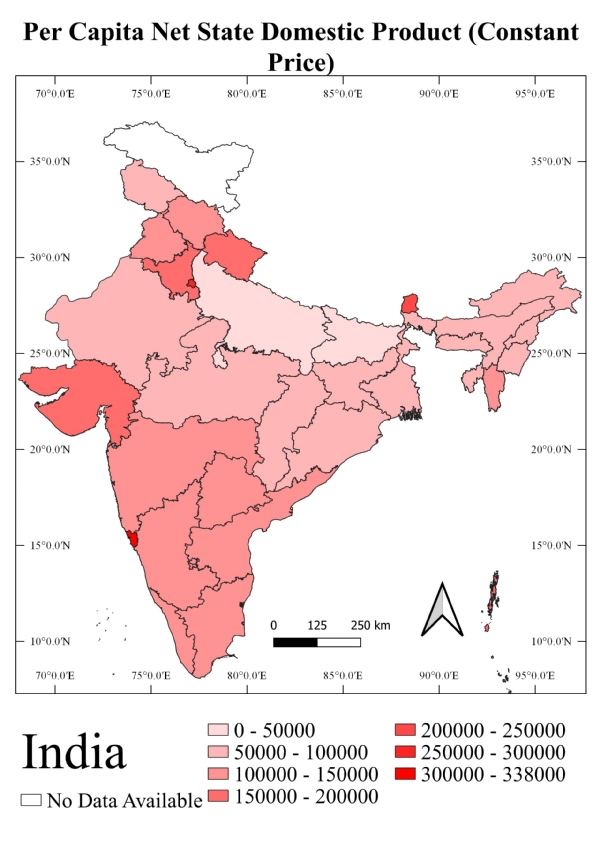

Now, when we compare all four maps we find that the population growth rate, rural population (2011), and per capita net state domestic product bring out one picture very clearly. As we have seen earlier, most central and eastern Indian states have less number of factories, high growth rates, and at the same time low per capita net state domestic product. It has been repeatedly highlighting the importance of industrialization for employment.
Conclusion
In the whole article, we have seen how different disparities could be correlated. Here we have considered the production of consumables and not the small scaled production units. None of the statistics included small-scale industries. One can easily take it as an argument to promote industrialization and urbanization, but that would be the wrong turn. In such conclusions, not only the bad effects of urbanization are often forgotten, but also the impacts of heavy industrialization are forgotten. At the same time, it remains a fact that many states with less industrialization and a rapidly growing population don’t seem to be in a good situation. India must act upon it now. For industrial development, infrastructural development is necessary. We can recall various infrastructure development programs undertaken recently by the government of India. This, in the coming years, would surely promote industrialization in backward areas.
Also Read: India’s journey from milk-deficient country to milk exporter
Industrialization is like a double-edged sword, which needs to be used carefully. On one hand, it provides jobs, employment, and development opportunities, at the same time, on the other hand, industrialization also brings various environmental problems, stress on local resources, etc. Then is it a deadlock situation? Way out could be MSMEs or the best option could be Cottage Industries or Village Industries.
In today’s modern world, where many think that cotton industries and village industries are of no use, on the contrary, these industries have great potential. Cottage industries can provide employment to thousands of villagers right at their homes. It can also become a key for women's empowerment. We will read about village industries in a coming article.
